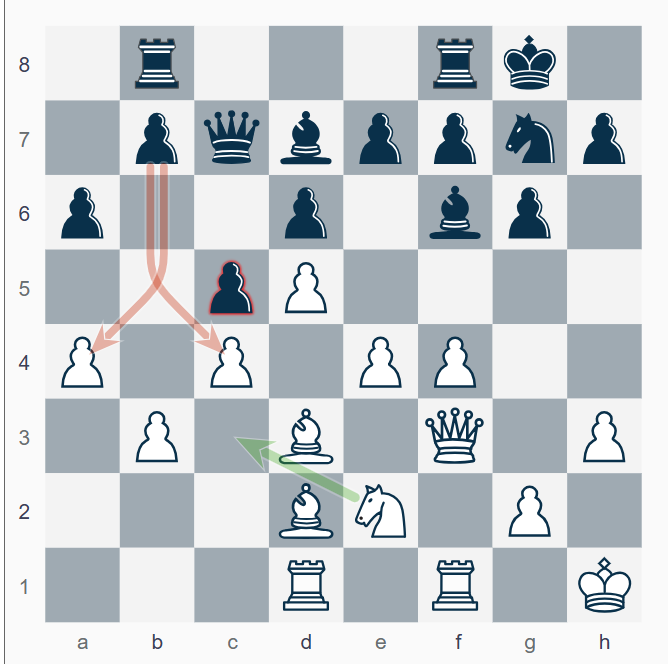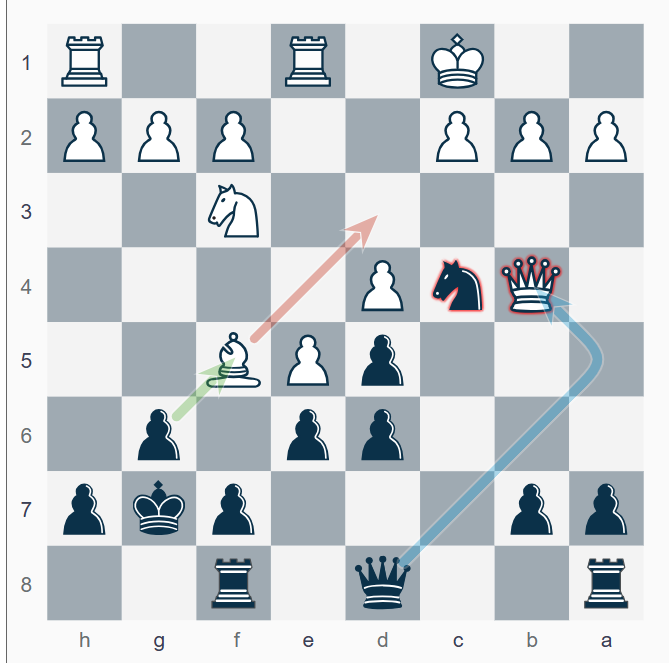Game Analysis - Electronic Knights 25EN03
A Detailed Look at My Correspondence Chess Game in the Electronic Knights Tournament

Photo by Marek Studzinski on Unsplash
Before sharing the latest updates on my progress in the Electronic Knights tournament, I want say thank you all for reading, comments and a special thank you to my supporters for the coffee.
I finished my last two games in the Electronic Knights Finals. And WOW, what a journey over the last 3 years!
There’s always something new to discover in chess. During the pandemic I signed up a US Chess Federation (USCF) membership and as a chess enthusiast with a long hiatus, this decision marked a significant turning point. After some test tournaments such as the Victor Palciauskas tournament I signed up for the Electronic Knights, which was played then via email.
Since 2024, the entire Electronic Knights tournament series moved to the ICCF platform but retained USCF Correspondence Chess Rules (engine-free). Players can register for up to ten sections. I initially competed in the preliminary rounds of two sections, 21EN09 and 21EN015. To my surprise, I advanced to the semifinals and then to the finals!
All games can be found in the tournament section of this webpage.
First, let me highlight how long correspondence chess takes. This tournament started in 2021, and here we are—three years later—in the finals. That really sets things in perspective! USCF’s decision to move to the ICCF server with its engine-free format was a great one. It made playing much easier compared to email.
The finals started on January 19, 2024, and will end on July 19, 2026. As of May 2024, I broke into the Top 100 Correspondence Chess Players in the USA at Rank #73 with an ELO of 2099. Today, I’m proud to be ranked #67 with ELO of 2104!
For those curious about rating calculations, USCF provides an excellent guide on how ratings are calculated.
In the finals, the Weighted Score System brings everything together. Here’s how it works:
The weighted score combines the scores from the Preliminaries, Semifinals, and Finals, with later rounds often having higher weightage. Assuming the weightage is proportional (e.g., Finals are weighted higher than Semifinals, and Semifinals higher than Preliminaries), we calculate:
Weighted Points =
(Prelim Score) × W₁ + (Semi Score) × W₂ + (Final Score) × W₃
Where W₁, W₂, and W₃ are weight factors.
Final Score: Each win counts as 4.5 points. Draws count as 2.25 points.
This system emphasizes the importance of all rounds. While two games are still ongoing, here’s the likely final ranking:
not official ranking under assumption Reger and Corkum win their game
| Rank | Player Name | Prelim Score | Semi-Final Score | Finals Score | Weighted Score |
|---|---|---|---|---|---|
| 1 | REGER, JEFFREY | 5 | 5.5 | 4 | 35.1 |
| 2 | BARCLAY, DEAN ARNE | 5.5 | 5.5 | 3.5 | 33.35 |
| 3 | CORKUM, TIM | 5 | 4.5 | 4 | 32.9 |
| 4 | BUSS, MICHAEL D | 5 | 5.5 | 3 | 30.6 |
| 5 | SCHROEER, EGBERT | 5.5 | 5 | 3 | 30.0 |
| 6 | WEINER, GERALD | 5.5 | 4 | 2 | 23.3 |
| 7 | NOHR, MATTHEW | 4.5 | 4 | 1.5 | 20.05 |
Cash prizes will be distributed as follows based on weighted-point scores as in Rule #12:
Note: Prize fund based on 200 entries and will be increased or decreased proportionately per number of entries assigned. A minimum of 50% of each prize will be paid. Players who complete all games and do not qualify for the Semi-final round will receive a CC gift certificate valued at $10.00. Those who complete all three rounds with no forfeit losses will receive a tournament pin and be eligible to win prize money depending on their weighted-point score.
You can find a summary about my opponenents in the tournament section.
Having finished my last two games (both drawn), I’m very likely to end 5th place—depending on the outcome of the final games. Stay tuned!
Enjoy!
This might be my fourth game against Michael in correspondence chess, and as always, it featured high-level play. Let’s dissect the key moments and explore what likely cost White the win.
Have a look at the annotated game below for a detailed move-by-move breakdown, including my thoughts and variations during the game. I then captured, highlighted and reflected on the critical moments.
The move 21. g4 is aggressive, aiming to seize space and open attacking prospects on the kingside. However, it could have been better timed. A quieter move like 21. Nc3 would have maintained flexibility, addressed Black’s queenside counterplay, and kept White’s position solid. The pawn push weakens White’s structure, providing Black with targets for later exploitation.

Black’s pawn sacrifice with 27. Bxc4 was a calculated attempt to activate pieces and generate counterplay. White’s acceptance of the pawn with 27. Bxc4 was correct and maintained the advantage. Declining the pawn with 27. bxc4 would have allowed Black’s rook to infiltrate with Rb3, creating significant activity. While White was correct to accept the sacrifice, this position demanded precise follow-up to consolidate and retain control.
White voluntarily exchanges into a less dynamic structure with 31. Rxe5. The alternative 31. Rf1 would have kept the tension and preserved opportunities for dynamic play, including doubling rooks or pressing against Black’s kingside. By exchanging rooks, White reduces the complexity of the position and shifts towards an endgame that favors Black’s defensive chances.
Simplifying into a rook-and-pawn endgame with 36. Qxf6+ was a turning point. While White retains a material edge, the queen exchange eliminates attacking chances and gives Black counterplay against White’s pawns. Keeping queens on the board would have preserved White’s initiative and kept Black on the defensive.
The move 45. b6 prematurely advances White’s passed pawn, forcing Black to stabilize the position. While logical, this move commits White to a specific plan and limits flexibility. A more patient approach, such as 45. Kf2, would have centralized the king and allowed White to maneuver while waiting for Black to commit.
White’s primary challenge in this game was converting advantages into a decisive win. Key issues include:
The game demonstrates the importance of balancing aggression with caution, particularly in correspondence chess, where deep analysis can uncover nuances missed during the game.
Playing against Gerald (Jeff) Weiner is always an engaging experience. In this game, as Black, I managed to hold a draw in a challenging position. However, the game slipped out of my hands due to a combination of passive decisions, missed opportunities for counterplay, and suboptimal endgame coordination.
Stronger emphasis on dynamic play, particularly in the opening and middle game, and earlier activation of the king in the endgame, would have significantly enhanced my winning chances.
My thoughts during the game are reflected in the annotations.

These little things, when combined, cost Black the chance to convert a promising position into a victory. However, a flawless play and holding a draw was a good result.
Thank you for reading! I’ll continue sharing insights and results from tournaments and chess adventures here.
I wish you all a Happy Thanksgiving
Amici Sumus – We are friends!
If you find value in my content, consider supporting me with a virtual coffee ☕️ or a beer 🍺. Your contributions help keep this blog thriving.
Stay updated by subscribing to my blog and sharing it with your chess friends.
